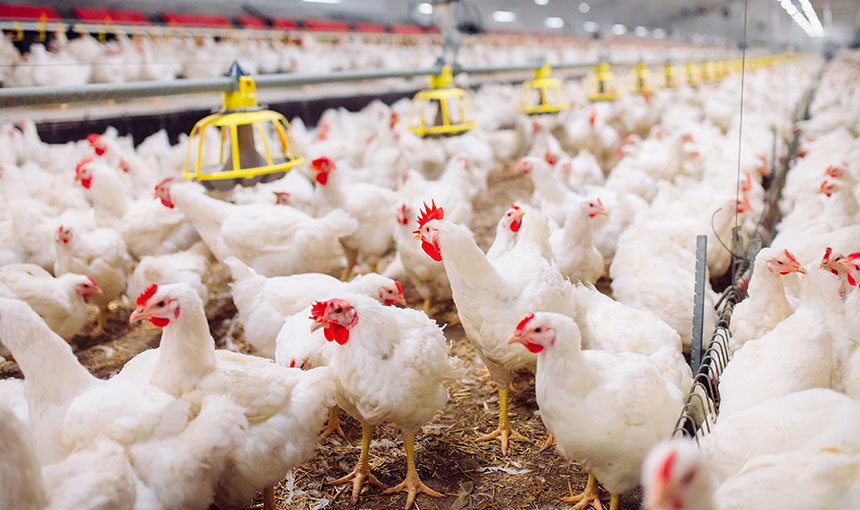Biosecurity network interventions
The spread of pests, weeds and pathogens into Aotearoa is a major cause of the decline of its biological heritage. This includes profitability of agriculture, access to export markets and the population viability of native and taonga (treasured) species.

Aims
To develop and implement modelling tools for nursery trade, livestock movement and recreational travel networks:
- Map generic patterns of likely introduction and spread through New Zealand.
- Identify critical points in networks for surveillance.
- Increase traceability so any outbreak can be traced back to the supplier or importer.
Focus
Led by Professor Phil Hulme of Lincoln University, this project focuses on the roles that four human-assisted networks, both individually and together, may play in the spread of pests, weeds, and pathogens:
- The plant nursery network: the movement of live plants through professional nurseries is known to be an effective means to disseminate plant pathogens, invertebrate pests, and weeds.
- The livestock transport network: livestock movements are known to play a critical role in the spread of animal diseases (e.g. FMD), ticks, and parasites.
- The freshwater recreational user network: New Zealand lakes are widely recognised as hubs for potential invasion via recreational users moving weeds and invertebrate pests.
- The natural area visitor network: the increasing penetration of visitors into natural areas provides new routes for the entry of pests, weeds, and pathogens into areas of high biodiversity value, and have been responsible for introducing and spreading pathogens (e.g. Phytophthora, myrtle rust) and weeds.
Issues & Impacts
Highlights
- Delivering network tools to help MPI better manage the spread of zoonotic pathogens in poultry farms through controls on feed and animal movements.
- National survey of lake users has helped improve MPI's Check, Clean, dry advocate programme by highlighting strong connectedness of lakes and variable compliance among some users.
- Work with Tahuri Whenua Network has raised the issue of risks arising from moving plant produce among different iwi and Māori grower groups
Publications
Dalziel P & Hulme PE (2016) A Socioeconomic Research Plan for Evaluating Possible Interventions in New Zealand Biosecurity Networks. Research Report No 338 Agribusiness and Economics Research Unit, Lincoln University
Essl F, Bacher S, Blackburn TM, Booy O, Brundu G, Brunel S, Cardoso AC, Eschen R, Gallardo B, Galil B, García-Berthou E, Genovesi P, Groom Q, Harrower C, Hulme PE, Katsanevakis S, Kenis M, Kühn I, Kumschick S, Martinou AF, Nentwig W, O'Flynn C, Pagad S, Pergl J, Pyšek P, Rabitsch W, Richardson DM, Roques A, Roy HE, Scalera R, Schindler S, Seebens H, Vanderhoeven S, Vilà M, Wilson JRU, Zenetos A & Jeschke JM (2015). Crossing Frontiers in Tackling Pathways of Biological Invasions. Bioscience 65: 769-782 DOI: 10.1093/biosci/biv082
Ganley B (2016) Natural area visitor network: Suitability of existing pathogen data and opportunities for new data collection to parameterise a natural area visitor network model. Scion Research Output 57827.
Ganley B (2016) Plant nursery networks: Suitability of existing pathogen data and opportunities for new data collection to parameterise a plant nursery network model. Scion Research Output 57718.
Hidano, A., Carpenter, T. E., Stevenson, M. A., & Gates, M. C. (2016). Evaluating the efficacy of regionalisation in limiting high-risk livestock trade movements. Preventive Veterinary Medicine 133: 31 – 41. DOI: 10.1016/j.prevetmed.2016.09.015
Hulme PE (2015) Invasion pathways at a crossroad: policy and research challenges for managing alien species introductions. Journal of Applied Ecology 52, 1418–1424 DOI: 10.1111/1365-2664.12470
Hulme PE, Bacher S, Kenis M, Kühn I, Pergl J, Pyšek P, Roques A, & Vilà, M (2017) Blurring alien introduction pathways risks losing focus on invasive species policy. Conservation Letters 10: 265-266. DOI: 10.1111/conl.12262
Hulme PE, Brundu G, Carboni M, Dehnen-Schmutz K, Dullinger S, Early R, Essl F, González-Moreno P, Groom QJ, Kueffer C, Kühn I, Maurel N, Novoa A, Pergl J, Pyšek P, Seebens H, Tanner R, Touza JM, van Kleunen M, Verbrugge LNH (online) Integrating invasive species policies across ornamental horticulture supply-chains to prevent plant invasions. Journal of Applied Ecology DOI: 10.1111/1365-2664.12953
Pergl J, Pyšek P, Bacher S, Essl F, Genovesi P, Harrower CA, Hulme PE, Jeschke JM, Kenis M, Kühn I, Perglová I, Rabitsch W, Roques A, Roy DB, Roy HE, Vilà M, Winter M, Nentwig W (2017) Troubling travellers: are ecologically harmful alien species associated with particular introduction pathways? Neobiota 32, 1-20 DOI: 10.3897/neobiota.32.10199
Saul W-C, Roy HE, Booy O, Carnevali L, Chen HJ, Genovesi P, Harrower CA, Hulme PE, Pagad S, Pergl J & Jeschke JM (online) Assessing patterns in introduction pathways of alien species by linking major invasion databases. Journal of Applied Ecology DOI: 10.1111/1365-2664.12819
Research Partners
The team brings together high-profile university academics (including two FRSNZ) with senior CRI colleagues to integrate fundamental and applied aspects of applying network models in biosecurity across a range of threats.
Links have been made with the Bio-Protection Research Centre as well as Complexity (Te Pūnaha Matatini) CoREs and the Plant Biosecurity CRC.